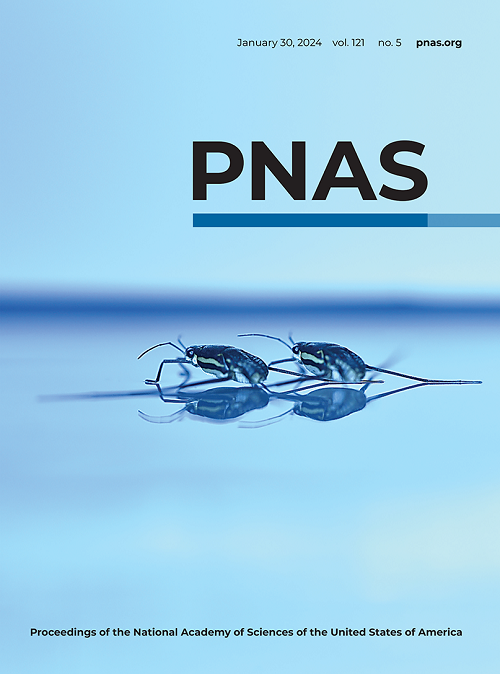Biophysical modeling of membrane curvature generation and curvature sensing by the glycocalyx
IF 9.4
1区 综合性期刊
Q1 MULTIDISCIPLINARY SCIENCES
Proceedings of the National Academy of Sciences of the United States of America
Pub Date : 2025-02-19
DOI:10.1073/pnas.2418357122
引用次数: 0
Abstract
Generation of membrane curvature is fundamental to cellular function. Recent studies have established that the glycocalyx, a sugar-rich polymer layer at the cell surface, can generate membrane curvature. While there have been some theoretical efforts to understand the interplay between the glycocalyx and membrane bending, there remain open questions about how the properties of the glycocalyx affect membrane bending. For example, the relationship between membrane curvature and the density of glycosylated proteins on its surface remains unclear. In this work, we use polymer brush theory to develop a detailed biophysical model of the energetic interactions of the glycocalyx with the membrane. Using this model, we identify the conditions under which the glycocalyx can both generate and sense curvature. Our model predicts that the extent of membrane curvature generated depends on the grafting density of the glycocalyx and the backbone length of the polymers constituting the glycocalyx. Furthermore, when coupled with the intrinsic membrane properties such as spontaneous curvature and a line tension along the membrane, the curvature generation properties of the glycocalyx are enhanced. These predictions were tested experimentally by examining the propensity of glycosylated transmembrane proteins to drive the assembly of highly curved filopodial protrusions at the plasma membrane of adherent mammalian cells. Our model also predicts that the glycocalyx has curvature-sensing capabilities, in agreement with the results of our experiments. Thus, our study develops a quantitative framework for mapping the properties of the glycocalyx to the curvature generation capability of the membrane.求助全文
约1分钟内获得全文
求助全文
来源期刊
CiteScore
19.00
自引率
0.90%
发文量
3575
审稿时长
2.5 months
期刊介绍:
The Proceedings of the National Academy of Sciences (PNAS), a peer-reviewed journal of the National Academy of Sciences (NAS), serves as an authoritative source for high-impact, original research across the biological, physical, and social sciences. With a global scope, the journal welcomes submissions from researchers worldwide, making it an inclusive platform for advancing scientific knowledge.

 求助内容:
求助内容: 应助结果提醒方式:
应助结果提醒方式:


